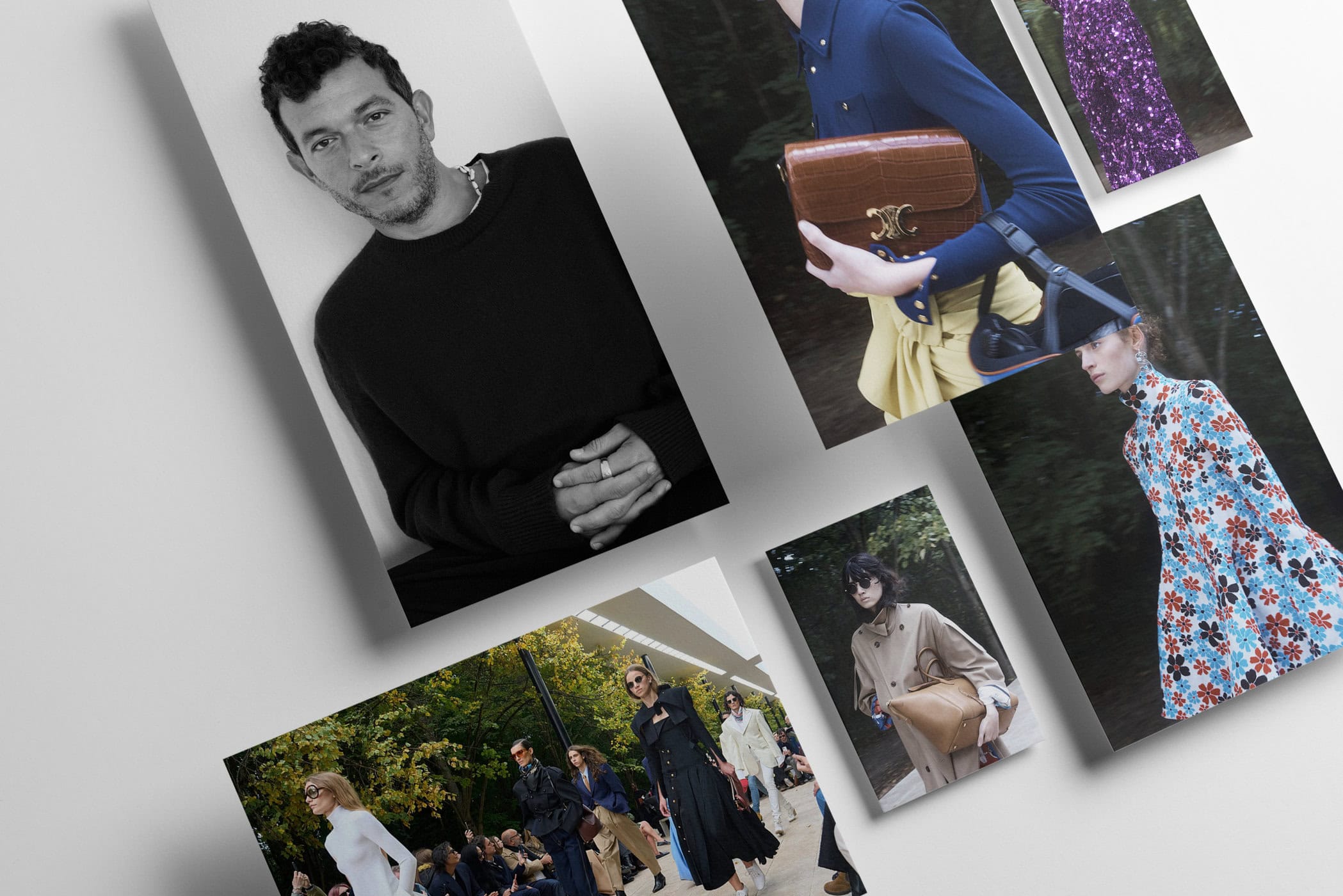At Domaine De Saint-Cloud, Rider Puts Rigor And Discretion At The Heart Of His First Ready-To-Wear Outing
By Kenneth Richard
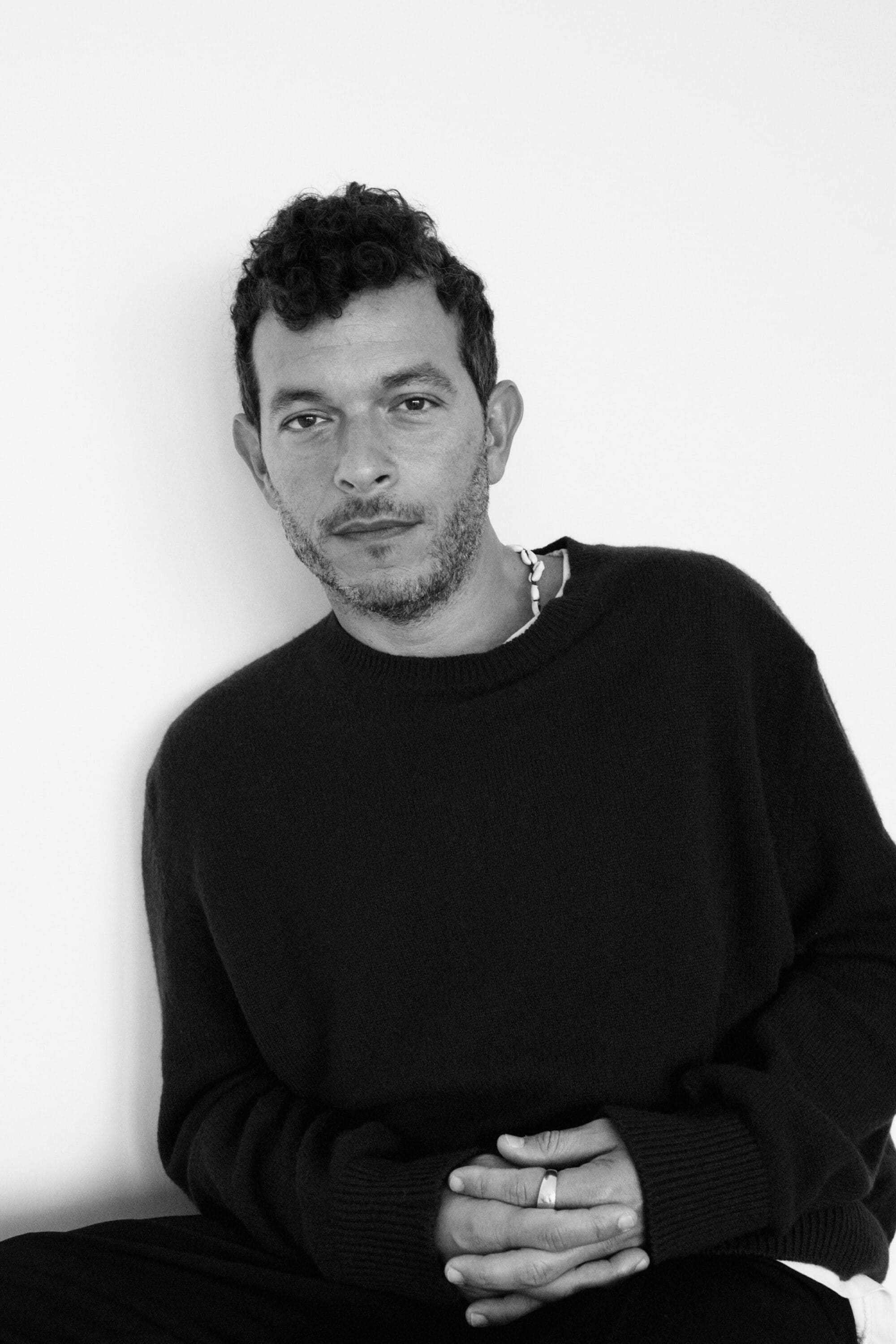
The drive out to Domaine de Saint-Cloud felt like a retreat from Paris’s feverish pace. Black town cars glided beyond the périphérique, past the city’s edge, until they reached a long modern terrace framed by trees just beginning to turn gold. The leaves hinted at change, but also continuity — a fitting backdrop for Michael Rider’s first ready-to-wear collection for Celine, an outing that felt less like rupture than recalibration. This was Celine, recentered.
Backstage, the show’s mirrored pavilion dissolved into the landscape, reflecting billowing branches until it seemed to vanish. Inside, Rider welcomed guests with a baseball cap, tan, and easy smile. He was warm, but composed: contemplative, focused, precise. His sentences were economical, pared back to essentials — much like his collection. No embellishment, no theater, just clarity of intent.
“I approached this collection the same way as the first,” he said of his Couture launch earlier this year. “When we started, we worked on both simultaneously. For me, they’ve always been part of the same foundation.” Foundation is his favored word, as much about process as about philosophy.
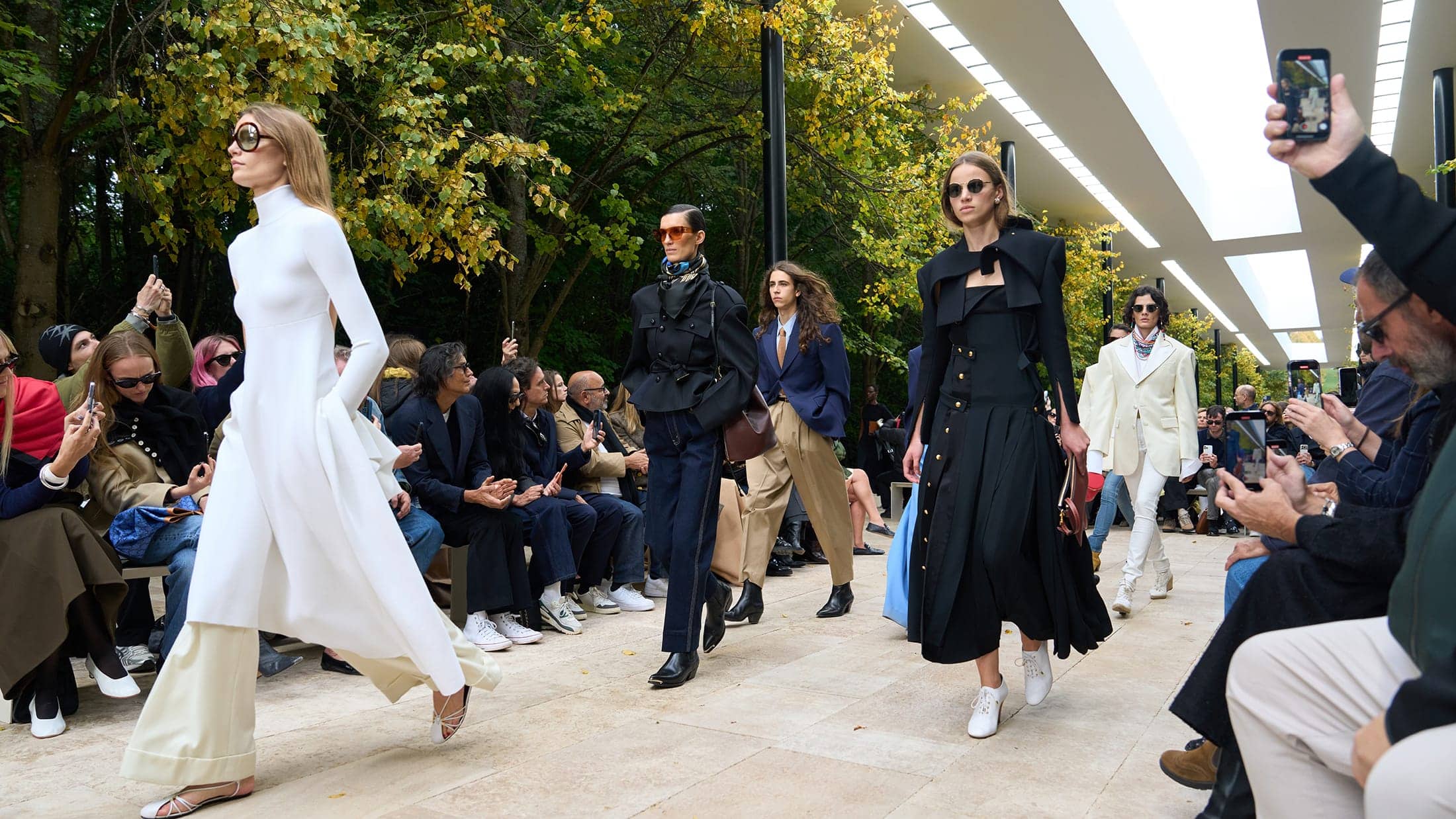
Rider is hardly a newcomer to the house. From 2008 to 2018 he served as design director under Phoebe Philo, helping shape the rigorous minimalism that made Celine an industry benchmark. Earlier, he cut his teeth at Balenciaga under Nicolas Ghesquière, absorbing lessons in structure and silhouette. In 2018 he crossed the Atlantic to become creative director of Polo Ralph Lauren, before returning to Paris this year to lead Celine in the wake of Hedi Slimane’s departure. If Slimane thrived on rupture, Rider’s instinct is steadier: not demolition, but building.
All the parts of Celine that are good will always be part of Celine. It’s about knowing when to push and when to pull. I like the idea of building, not demolishing.
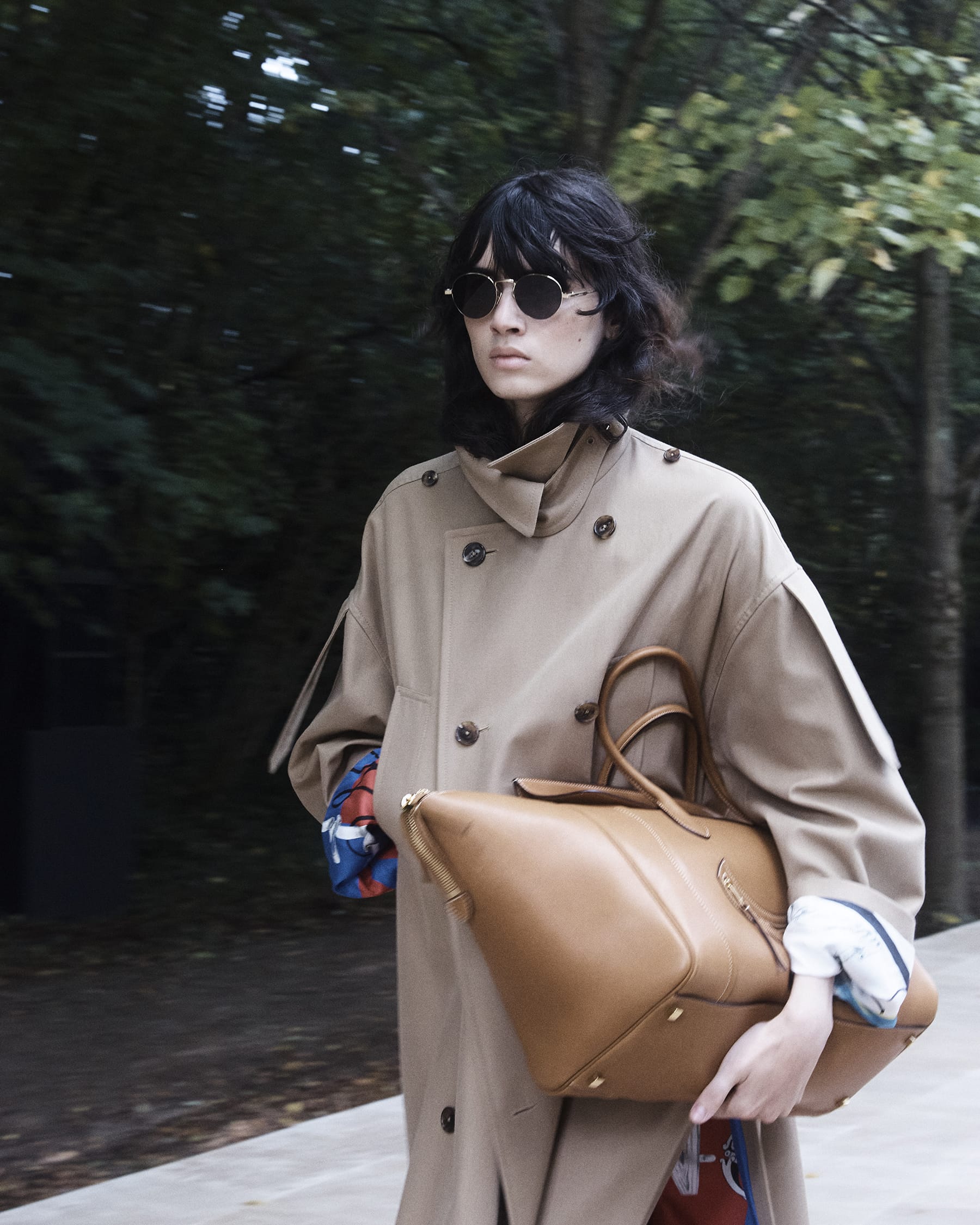
That ethos was reflected in the collection itself. The clothes carried an unmistakable rigor, yet never felt forced. Sharp coats, lean trousers, and sculptural dresses spoke to the house’s codes of discretion — what Rider called a “certain rigor” that has always defined Celine. “It’s not a place you come to be the most outrageous,” he said. “But hopefully you have the best coat.”
The decision to show at Saint-Cloud was as symbolic as it was practical. “This week in Paris felt full of boxes,” he told me. “I wanted people to have air, to spend time outside of the city. Despite the difficulty of getting here, I thought it was right to be in a park — a Sunday in nature instead of another box.”
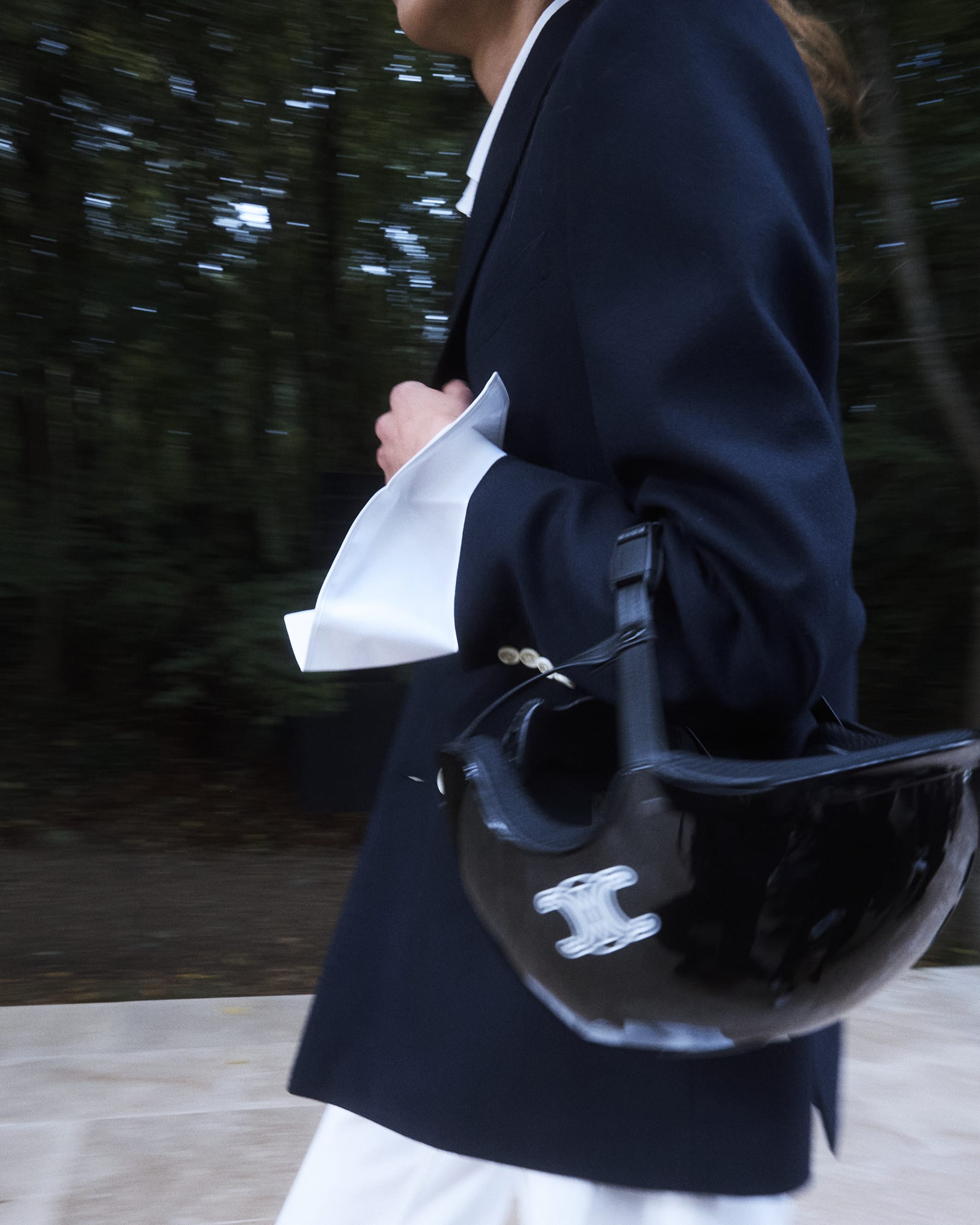
That sense of air, of space, found its echo in the clothes. Rider played with volume and restraint, drawing on techniques that create form without weight. Gazar, a fabric woven with dual yarns, offered paradoxical structure and lightness; wool and silk were combined to build shapes that seemed to float. Color came as immediate, declarative gestures — bold but never loud.
Accessories added subtle twists. Inspired by the sight of cyclists weaving through Paris, Rider introduced helmets as quietly subversive accents. Scarves, meanwhile, carried the narrative thread: some derived from Celine’s past, others newly conceived, all woven together to blur the line between heritage and present. “I love when something feels like it’s a hundred years old, and something else feels like it was made yesterday,” he said. “Together, they make sense.”
The process itself remains tactile.
I still draw. My team draws. We build mood boards, we work three-dimensionally. The mood is present from the beginning, not added at the end.
That insistence on hand and eye, on design as craft, aligns him with Celine’s deepest roots.
If the collection seemed quieter than the season’s headline-grabbing debuts, that was precisely the point. Rider has no interest in being a flavor of the moment. His priority is serving Celine’s woman with consistency and clarity, rather than competing for noise.
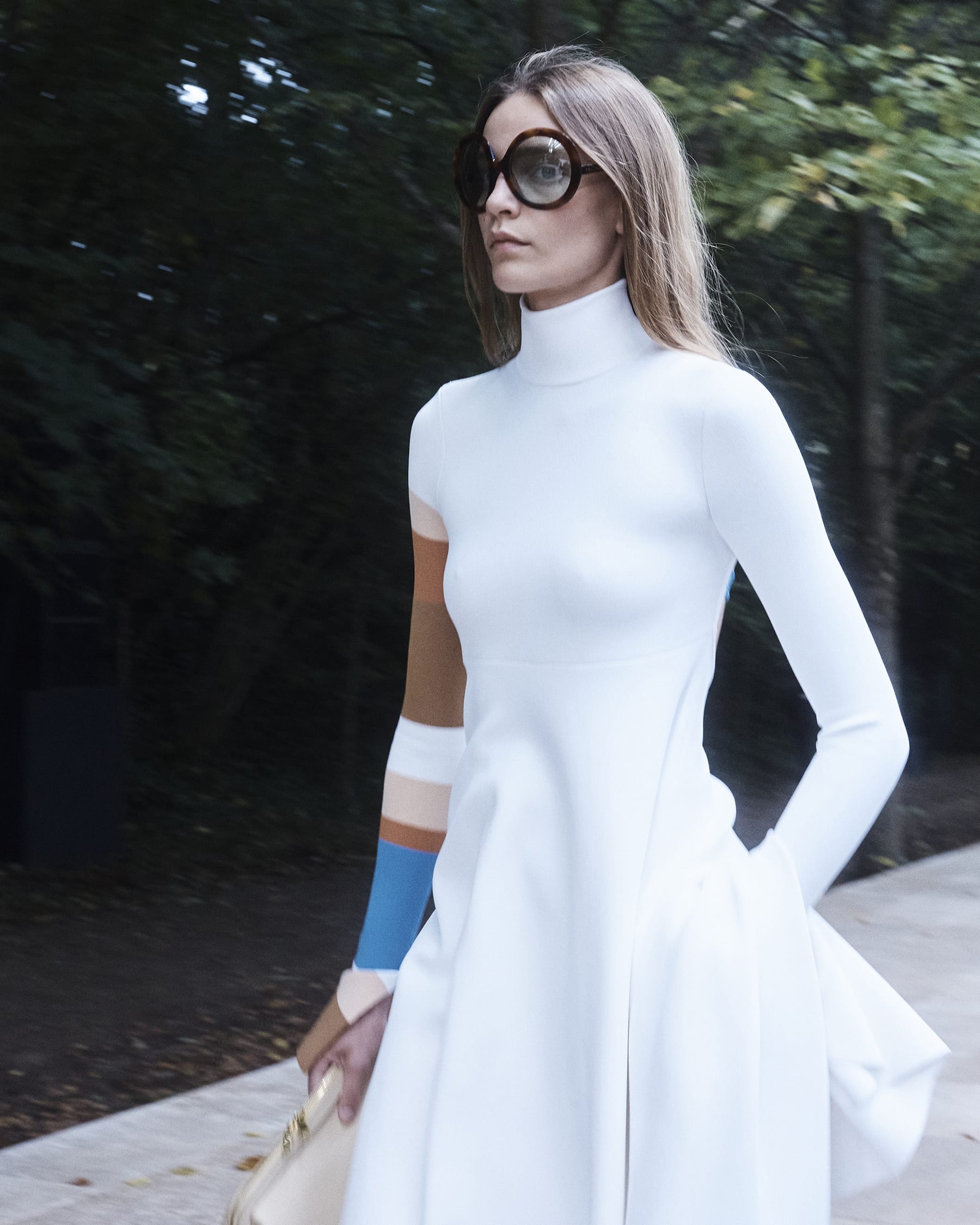
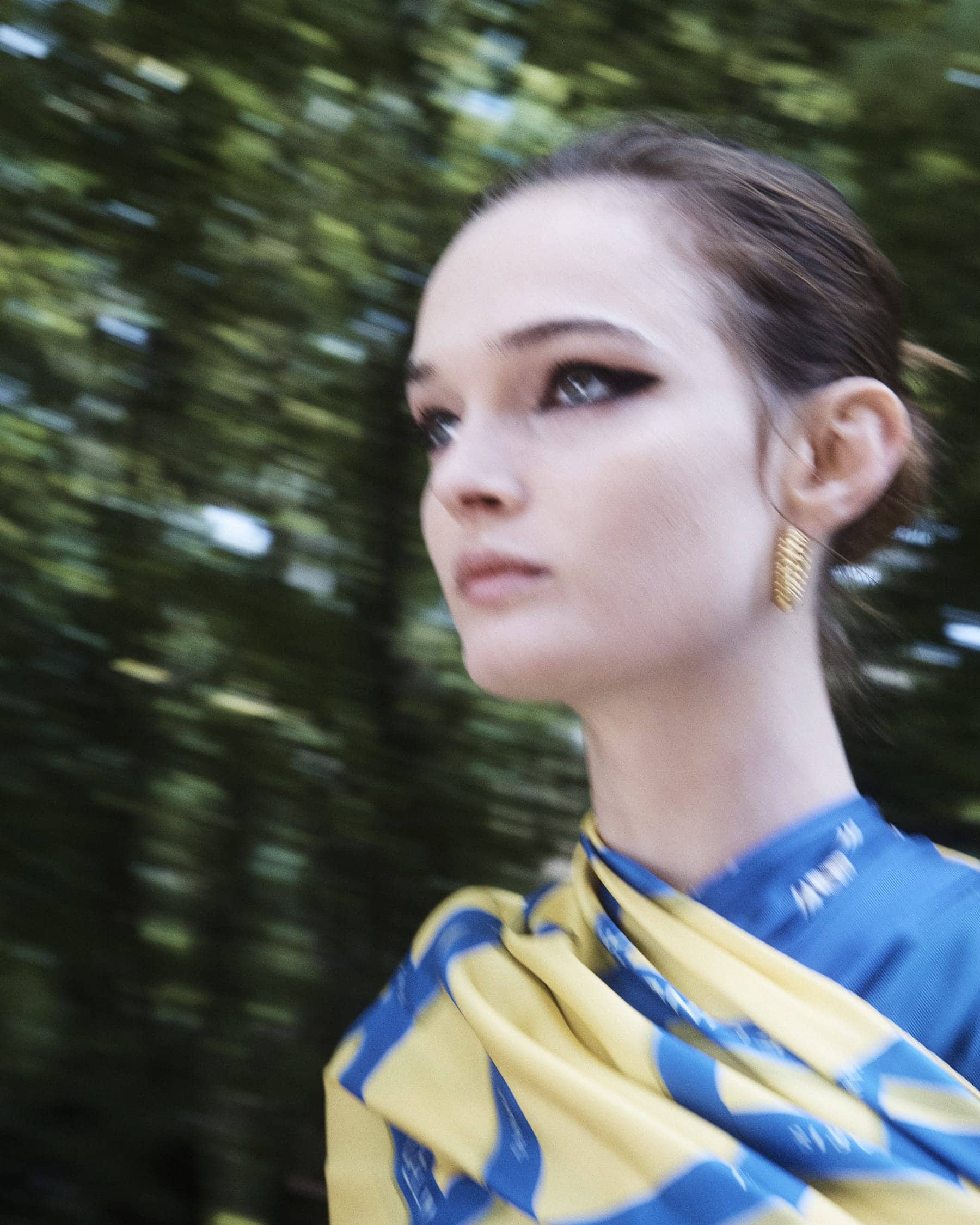
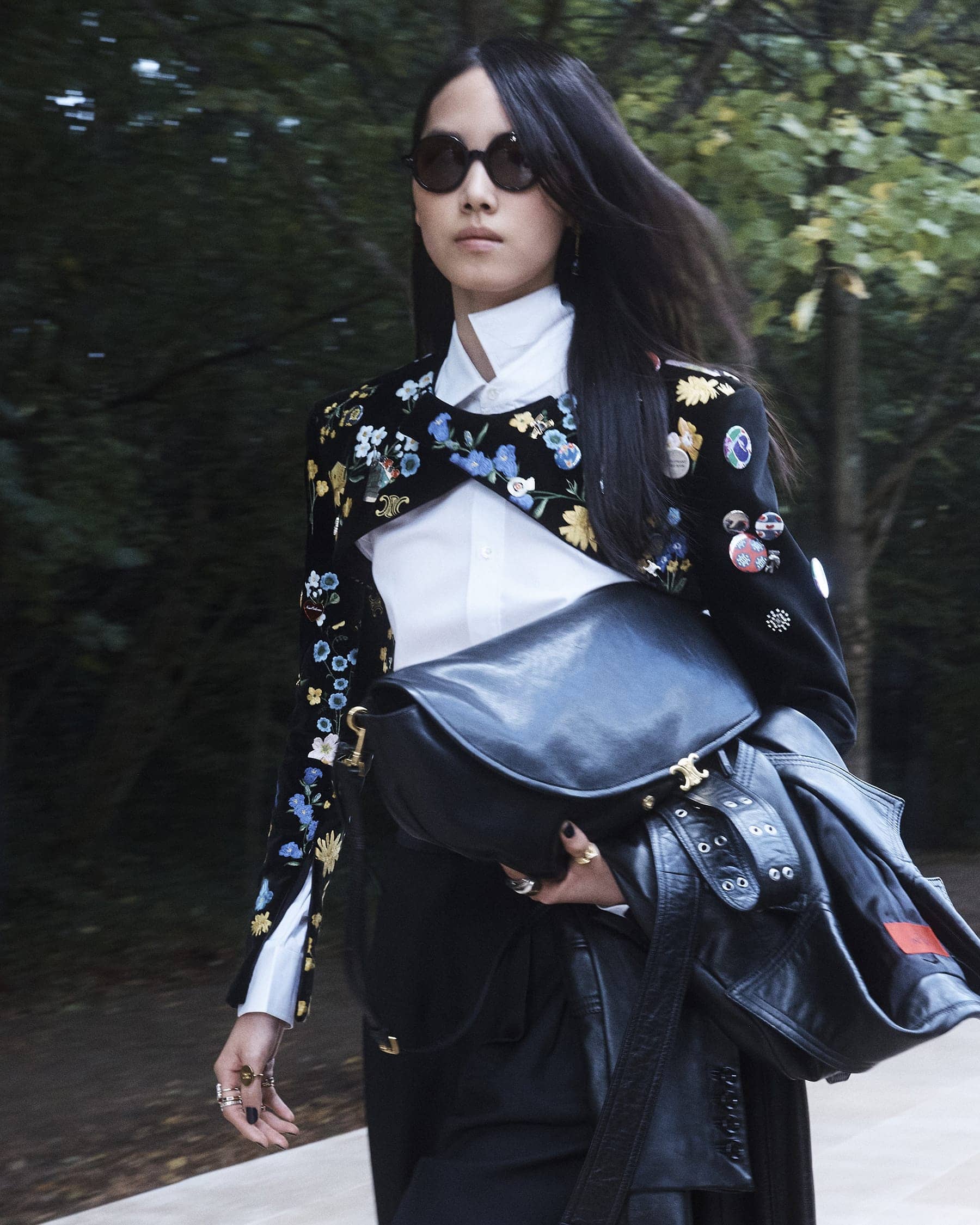
At Domaine de Saint-Cloud, amid mirrored walls and autumn light, Rider reminded the industry that sometimes the most radical move is not disruption but focus. This was not about spectacle, but about re-centering — a steady hand guiding a house he knows intimately, rebuilding it from the inside out.
With this debut, Michael Rider signaled a new rhythm for Celine: one built on rigor, discretion, and conviction. A promise that style endures not through volume, but through clarity.
